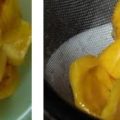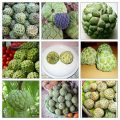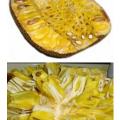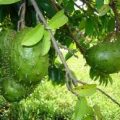Candied fruits also known as crystallized fruit, are made by submerging fruit pieces in sugar syrup solutions of gradually increasing strength, then drying. During the soaking, sugar is absorbed by the fruit and moisture is lost from the fruit.
Shelf-life: The preservation relies on the high sugar and the low moisture content. They can be kept for several months when stored in a cool dry place, away from direct sunlight.
Fruit preserves are prepared by soaking mature fruits in sugar solution and keeping them in syrup.
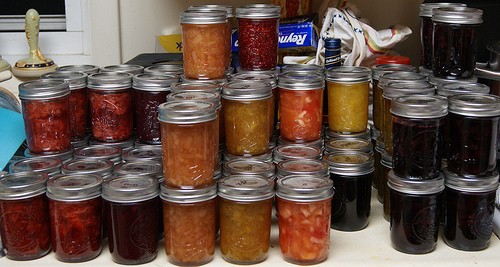
Shelf-life: They can be kept for several months due to the high sugar content, when stored in a cool dry place, away from direct sunlight.
Equipment required
• Sharp stainless steel knife
• Scale
• Bowls, containers
• Cooker or stove
• Boiling pan (stainless steel or aluminium)
• Stainless steel sieve
• Spoons for measuring, wooden spoon for stirring
• Refractometer or hydrometer
• Measuring jug
• Wire trays
• Solar dryer (optional)
• Jars, tins, cartons or polythene bags
• Capping machine or heat sealer
• Labels and label gummer or self-adhesive labels
Quality control points:
• Use only fully mature fruits at the hard stage without bruising or damage.
• Use only refined, granular white sugar.
• Weigh all ingredients to the correct formulation.
• To be efficient, it is essential to recycle the syrup solution and use it for several batches always adjusting the ºBrix value to the required level by adding more sugar. However, re-use the syrup solutions only 3 to 4 times, as the heating required to dissolve the extra sugar begins to impart a burnt taste to the syrup.
• If available, check the correct sugar content by using a refractometer.
• Check the correct fill-weight before sealing the bags.
• If available, use 400 gauge polypropylene bags as they provide greater protection against moisture.
Preparation of sugar syrup solutions
1. Prepare the first sugar syrup solution of 40ºBrix by dissolving 400 g sugar in a small amount of water and
make the volume up to 1 litre.
2. Increase the concentration of the sugar solution by adding sugar and using a refractometer. The refractometer has a scale which gives a reading in percent of sugar present.
3. Alternatively the sugar syrup concentration can be measured by using a hydrometer, which measures specific gravity, density or baume (see table for relationship between ºBrix and other measuring units). Use the hydrometer very carefully because it is made from glass, which may break and contaminate the food.
The strength of sugar solutions is measured in ºBrix. 1% sugar solution = 1ºBrix
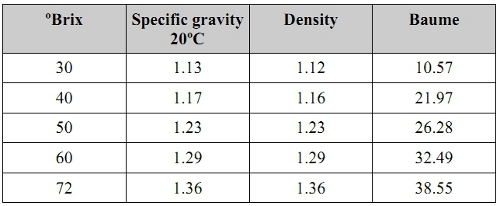
Ingredients:
Salt to prepare brine solution (150 g/l)
Calcium chloride to prepare brine solution (10 g/l)
Sugar to prepare syrup
1. Cut fruit in half lengthwise.
2. Carve out the core of the fruit.
3. Scoop out the bulbs.
4. Cut the end of the bulbs to remove the seeds.
5. Prepare a brine solution containing 15% salt (150g/l) and 1% calcium chloride (10g/l).
6. Soak bulbs in brine solution for 2 days. Place a wooden plate with a weight on top of the fruit to keep them submerged in the brine.
7. Remove the bulbs from the brine, wash to remove the salt and drain using a stainless steel sieve. Check the flavour to ensure that all salt has been removed.
8. Prepare sugar syrup of 40ºBrix.
9. Boil the deseeded bulbs for 5 minutes in the syrup.
10. Keep mixture at room temperature (28-31ºC) for 24 hours.
11. Remove bulbs from the syrup.
12. Add more sugar to the syrup until it is 50ºBrix (use a refractometer).
13. Immerse bulbs in the syrup and keep at room temperature for 24 hours.
14. Remove bulbs from the syrup.
15. Add more sugar to the syrup until it is 62ºBrix.
16. Immerse bulbs in the syrup and keep at room temperature for 24 hours.
17. Remove bulbs and quickly rinse in water to remove surface syrup.
18. Drain off the syrup by spreading on wire trays.
19. Dry drained fruits for about 1 day in a solar or tray dryer.
20. Pack candies in jars, tins, cardboard cartons or in polythene pouches and seal them.
21. Label.
Source: Manual for Small Scale Fruit Processors © 2004 International Centre for Underutilised Crops, UK

